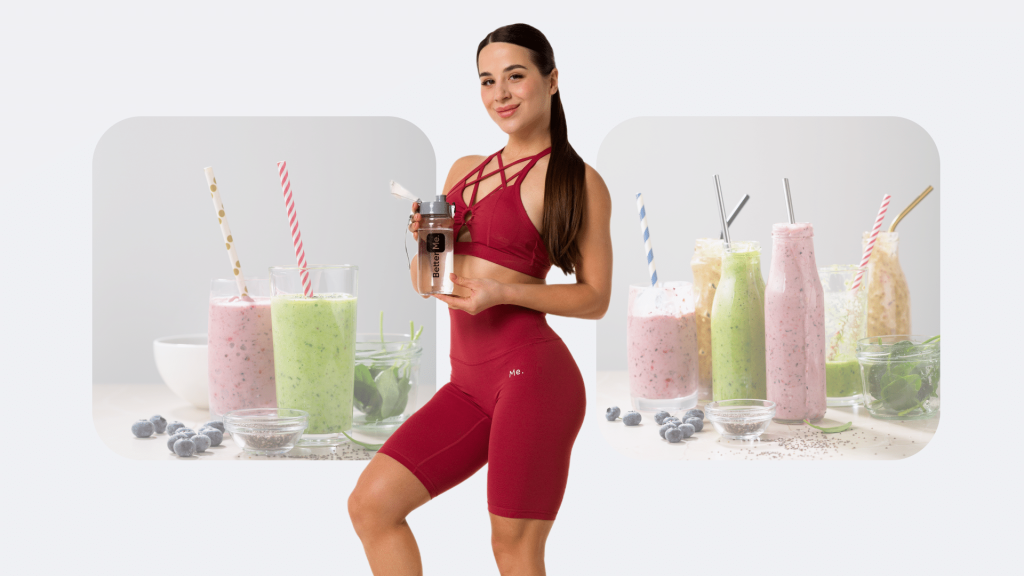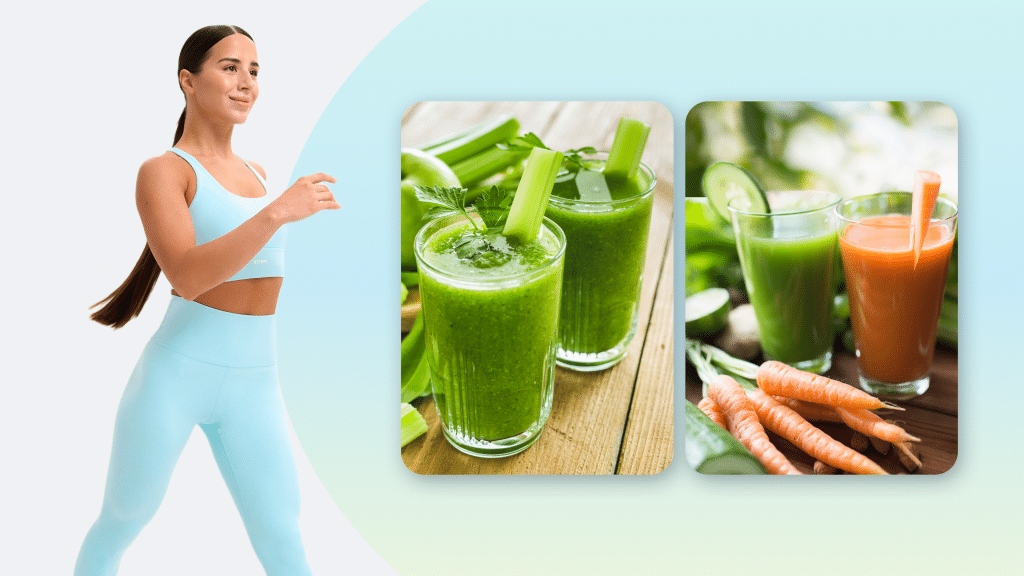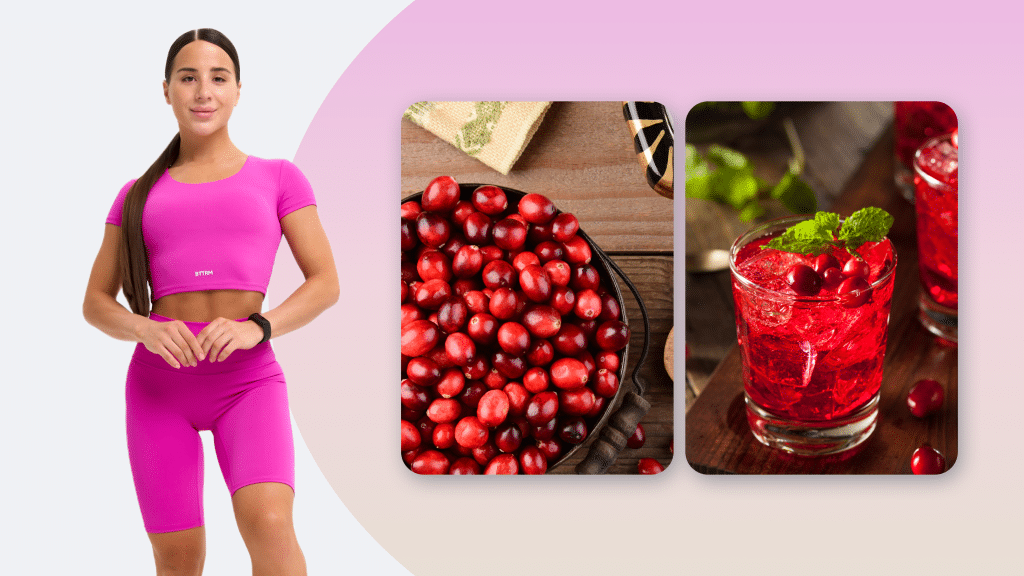Green smoothies are all the rage right now and for a very good reason: they can be incredibly nutritious and delicious.
Kale, which is one of the main ingredients in this smoothie, is often touted as one of the healthiest foods on earth as it’s high in antioxidants and a variety of vitamins and minerals. If you’re looking to get healthier and stronger, this smoothie can definitely help supply some nutrients.
What Is a Kale Smoothie?
Kale smoothies are exactly what they sound like: green smoothies that have kale as an ingredient. There are many recipes out there that include kale, but the most common one is:
Kale Smoothie
This smoothie is rich in protein and fiber and can be consumed at any time of the day. Here’s how to make it:
Ingredients
- 3 cups kale leaves (removed from tough stalks, loosely packed)
- ½ banana
- 1 pear (cored and sliced)
- ¾ cup water
- 1 ½ cups frozen peaches
- 1 cup plain Greek yogurt
- 1 cup frozen mango
- 1 ½ teaspoons honey (optional, to taste)
Instructions
- Start by placing the first four ingredients in a blender and blend until smooth.
- Add the remaining ingredients and continue blending until the mixture is smooth enough. Pour in a little more water to achieve your desired consistency.
- Taste the smoothie and add some honey if you want it sweeter. Serve immediately.
This recipe is courtesy of kristineskitchenblog.com (1).
Kale Smoothie Nutrition
The exact nutrients in a kale smoothie will depend on the ingredients you use. However, with kale as an ingredient, you can expect your smoothie to include all the nutrients of this vegetable.
A single cup of raw kale (approximately 20 grams) contains (2):
- Vitamin A: 5% of the DV (mostly from beta-carotene)
- Vitamin K: 67% of the DV
- Vitamin C: 21% of the DV
- Manganese: 8% of the DV
- Calcium: 4% of the DV
- It also contains smaller amounts of several B vitamins, potassium, magnesium, iron, and phosphorus
If you wish to free yourself from all the extra pounds that have been weighing you down for way too long, start using the BetterMe: Health Coaching app and overhaul your entire life!
What Are the Benefits of a Kale Smoothie?
Here’s what kale smoothies may do for you:
- They May Give Your Skin a Healthy Glow
Kale is rich in carotenoid precursors to vitamin A, which helps with collagen production and keeps your skin looking youthful. It also contains lutein, which is an important antioxidant for skin health. Drinking the smoothie on a regular basis may help improve the health of your skin.
- They Help with Weight Loss And Keeping You Fit
Kale is low in calories and rich in fiber, which makes it a great food for people who are on a diet. It’s also quite filling and can keep you energized throughout the day without making you feel sluggish or tired (4).
- They Provide You With More Energy
Kale may seem like a rather boring vegetable, but it’s actually packed with iron and other nutrients that can help support energy metabolism. Consuming this smoothie on a daily basis may boost your energy levels without making you feel nervous or jittery (3).
- They Keep Your Bones Healthy
One of the most important benefits of kale smoothies is that they provide nutrients that can help strengthen your bones and may prevent them from becoming brittle. This is thanks to the calcium, magnesium, phosphorus, and vitamin K content in kale (3).
- They Help You Detox
Kale contains nutrients that support liver function and others that promote bowel movement, which helps with the natural detox process of your body (3). If you want to help your body get rid of all the toxins, make sure to eat a nutrient-rich diet with plenty of fiber and water.
- They May Fight Inflammation
This green smoothie is loaded with anti-inflammatory ingredients, including ginger and turmeric. Consuming this smoothie regularly may help reduce joint pain and stiffness due to its properties that help fight inflammation (3).
- They Improve Your Digestion
When your digestive system is working properly, you feel energized throughout the day and you don’t get tired or uncomfortable after eating. Kale is full of fiber that can improve your digestion, reduce constipation, and prevent other digestive complications (3).
- They Fight Diseases
Kale smoothies are a convenient way to get a lot of antioxidants in. Some studies have suggested that antioxidants in the diet may help reduce the chances of developing certain cancers, Alzheimer’s disease, heart disease, and diabetes (5).
- They Keep Your Eyes Healthy
Kale is rich in carotenoids that your body converts into vitamin A. Vitamin A is essential for eye health. Kale is also rich in the antioxidants lutein and zeaxanthin that can help fight diseases of the eyes, which are common as we age (6).
- They Strengthen Your Heart
Although kale contains very little fat, the small amount it does contain largely consists of omega-3 fatty acids that are incredibly good for your cardiovascular health (7).
This smoothie is also rich in potassium, which keeps your heart healthy by regulating its rhythm and helping reduce blood pressure (8).
- They Might Increase Your Lifespan
People who consume a diet that is rich in fruits and vegetables may reduce their risk of having a stroke and they may also lower their chances of developing heart disease, some cancers, and other serious health problems (9).
Eating kale or drinking kale smoothies can help you increase your vegetable intake and possibly help you prevent chronic disease and live longer.
- They Might Boost Oral Health
If you have a problem with your teeth, kale smoothies can help improve the condition of your mouth and protect it from infections. This is because they contain nitrates that may increase the levels of good oral bacteria (10).
If you prefer juices to smoothies, learn more in our previous article Kale Juice Benefits.
Benefits of Kale Smoothie for Weight Loss
Weight loss is one of the most controversial reasons people give for adding kale to their smoothies, but some studies have shown that low energy-dense foods such as green leafy vegetables can be very helpful when it comes to weight loss (11).
Due to its low-calorie, nutrient-dense profile, kale can help you reduce your calorie intake and improve the quality of your diet. However, it’s not a magical weight loss solution.
Ultimately, weight loss comes down to calorie control, so if you want to lose weight, you should avoid consuming more calories than your body can burn (12).
This means making better food choices, exercising regularly, and drinking plenty of water. Drinking your calories, such as in juices and smoothies, is sometimes not recommended at all for weight loss as it tends not to be as filling and satisfying as eating the same whole foods in their solid form.
Read more: 7-Day Military Diet Plan: Understanding This Quick Fix Weight Loss Method
What Can You Add to Your Kale Smoothie for the Best Nutrition?
There are several ingredients that you can add to your kale smoothie to make it more nutritious. However, you should keep in mind that some of them should be added only when the smoothie is about to be consumed as they don’t last for too long.
Fruits
Kale smoothies are usually made with fruits as they’re sweet and can balance the bitterness of the kale. Some of the most suitable options include strawberries, oranges, grapefruit, and cherries, but you can use any fruit you like or have on hand.
Spices
Kale smoothies are nutritious and delicious because they’re made with natural ingredients that may have their own benefits. If you want to make the most out of your kale smoothie, consider adding some spices such as cinnamon, ginger, or cayenne pepper.
Nuts and Seeds
If you want to add some protein to your drink and improve its nutritional profile, try adding nuts such as walnuts or almonds (or their nut butters). You can also use seeds such as pumpkin seeds and flaxseeds for a delicious and crunchy kale smoothie (13).
Nuts and seeds are a great source of heart-healthy fats (14).
Herbs
Fresh herbs such as parsley or mint leaves can provide your kale smoothie with a refreshing taste that you’ll enjoy even more.
Some herbs may offer additional health benefits (15) and make your drink more fragrant.
What’s the Best Way to Prepare and Store Kale for Smoothies?
You can prepare and store your kale ahead of time so you can use it when you’re making smoothies. Here are several methods:
Kale Ice Cubes
If you want to use kale in your smoothie and make the most out of its nutrients, consider freezing it ahead of time. You can prepare ice cubes by washing the leaves, cutting them into large pieces and blending them. Pour the blended kale into an ice cube tray and freeze it. Whenever you want a kale smoothie, just throw some frozen cubes into your blender.
Kale Smoothie Bags
You can also freeze kale in individual servings by using plastic sandwich bags. Wash the leaves thoroughly with cold water, remove the stems, and chop the leaves into small pieces. Place the leaves in the sandwich bags and store them in your freezer.
When you want to use the kale, simply add the frozen pieces into your blender along with other ingredients.
Spray Freeze Your Kale
Kale can also be stored in a freezer by using spray-freeze packs or a food saver machine. This method is incredibly efficient in preserving nutrients and preventing bacteria from multiplying.
Chopped kale can be stored in small portions in storage bags. You should then take out however much you need to blend into smoothies throughout the week and place the remaining amount back into the freezer.
How Long Does Kale Last?
Kale leaves can last for several weeks when they’re properly washed, cut and stored in the freezer. This is because kale freezes well and bacteria cannot grow on frozen produce. When it comes to fresh kale, you can store it in a refrigerator and use it for approximately 5 days.
To prevent wilting, separate the leaves from the stem and place them into an airtight container or bag. You should then store them in a fridge and use them as soon as possible.
Kale Smoothie Recipes Worth Trying
Here are some excellent smoothie recipe options to choose from:
Kale-Ginger Detox Smoothie
Are you looking for a way to clear all that residual holiday “cheer” from your system? Well, you’re in luck. This smoothie is loaded with lots of super fruits and vegetables that will get your body in peak condition in no time. Here’s how to make it:
Ingredients
- 1 ripe banana, peeled and frozen
- ½ cup frozen blueberries
- 2 teaspoons ginger, peeled and finely grated
- 2 cups kale leaves, loosely packed
- 1 cup unsweetened almond milk
- 1 tablespoon chia seeds (optional)
- ⅛ teaspoon ground cinnamon
- 2 teaspoons to 1 tablespoon raw honey
Instructions
- Add all the ingredients to a blender and mix well.
- Blend until the mixture is smooth. You can pour in more almond milk to help with the blending process of the frozen fruit and achieve desired consistency.
- Remove and serve as is or chill in the refrigerator.
This recipe is courtesy of ohmyveggies.com (16).
Kale and Pineapple Smoothie
This recipe provides a delicate balance between a creamy green kale pineapple smoothie with banana and some Greek yogurt to deliver the ultimate taste. It’s filled with lots of healthy protein and nutrients that will keep you full for hours. Here’s how to make it:
Ingredients
- 2 cups lightly packed chopped kale leaves, stems removed
- ¾ cup unsweetened vanilla almond milk, or any milk you prefer
- 1 frozen medium banana, cut into chunks
- ¼ cup plain non-fat Greek yogurt
- ¼ cup frozen pineapple pieces
- 2 tablespoons peanut butter, creamy or crunchy as preferred
- 1 to 3 teaspoons honey, to taste
Instructions
- Add the ingredients – kale, almond milk, banana, yogurt, pineapple, peanut butter, and honey – in the order listed into your blender.
- Blend until the mixture is smooth. Add some more milk as needed until you achieve your desired consistency. Enjoy immediately.
This recipe is courtesy of wellplated.com (17).
Read more: Intermittent Fasting Smoothie Recipes That Are Easy, Creamy, and Full of Fiber
Pistachio Ice Cream Kale Green Smoothie Shake
This smoothie is extra satiating as it’s filled with healthy fats and protein from the nuts. It also delivers a milkshake-like texture that adds to its overall aesthetic appeal. Here’s how to make it:
Ingredients
- ½ cup (4 oz) milk substitute or filtered water
- 1 cup kale leaves, about 3 large leaves
- 2 bananas, fresh or frozen
- ½ cup pistachios, hazelnuts, or raw cashews
- 3 tablespoons honey or ¼ cup raw pitted dates, chopped
- 1 teaspoon vanilla extract
- ½ teaspoon finely minced ginger
- Pinch of salt
- 2 cups ice (1 cup of ice if using frozen bananas)
Instructions
- Start by placing all the ingredients into your blender in the order listed above.
- Blend on the lowest speed, then progressively increase the blending speed to maximum. Blend for approximately 1 minute until smooth.
- Remove and enjoy
This recipe is courtesy of blenderbabes.com (18).
Chocolate Kale Smoothie
This recipe can be used as a post-workout shake, meal accompaniment, healthy dessert, or just a good snack. Here’s how to make it:
Ingredients
- 6 large washed kale leaves
- 2 frozen bananas
- 2 scoops or tablespoons of chocolate protein powder
- 2 cups unsweetened vanilla almond milk
- 1 tablespoon almond butter
- Handful of ice
- Optional blackberries and/or teaspoon chia seeds for topping
Instructions
- Add all the ingredients except the ice into a blender and blend until smooth.
- Gradually add the ice and blend again. Add any toppings of your choice and serve immediately.
This recipe is courtesy of thegreencities.com (19).
Is it Okay to Put Raw Kale in a Smoothie?
Yes, it’s perfectly safe to put raw kale in a smoothie. In fact, blending raw kale can help retain the maximum amount of nutrients and antioxidants. However, some people may not find the taste of raw kale appealing. If this is the case, here are some options.
Alternatives to Raw Kale
If you’re not a fan of the taste or texture of raw kale in your smoothie, here are some alternatives you can try:
- Blanching Method: Blanching the kale by quickly boiling it for a minute or two and then immediately transferring it to an ice bath can help soften its texture, reduce bitterness, and make it easier to blend.
- Cooked Kale: Lightly steaming or sautéing kale can reduce goitrogen levels while still providing essential vitamins and minerals.
- Kale Powder: If you prefer a smoother texture in your smoothies, adding kale powder can offer the same nutritional benefits without the fibrous texture of raw kale.
- Other Leafy Greens: Swapping out some of the kale with other leafy greens such as spinach or collard greens can provide a similar boost of nutrients.
You can also replace bag snacks with healthier vegetable options. Find more details in our blog – Kale Chips Keto.
Whether you’re a workout beast or just a beginner making your first foray into the world of fitness and dieting – BetterMe has a lot to offer to both newbies and experts! Install the app and experience the versatility first-hand!
Tips for Preparing Raw Kale for Smoothies
- Wash Thoroughly: Always wash raw kale thoroughly to remove any dirt or pesticide residue.
- Remove Stems: The stems of kale can be tough and bitter, so it’s a good idea to remove them before blending. Simply tear the leaves away from the stems for a smoother texture.
- Chop Finely: Chopping kale into smaller pieces before adding it to your blender can help ensure a smoother consistency in your smoothie and make it easier to blend.
- Balance Flavors: To counteract the slightly bitter taste of raw kale, pair it with sweet fruits such as bananas, mangoes, or berries. Adding a splash of juice or a teaspoon of honey can also enhance the flavor profile.
- Blend Well: For the best texture, blend your smoothie until the kale is well-integrated and the mixture is smooth. If your blender struggles with raw kale, try gradually adding liquid to achieve the desired consistency.
Tips for Incorporating Kale Smoothies into Your Diet
- Balance and Variety: To maximize the nutritional benefits and prevent potential issues, balance your smoothie with other leafy greens such as spinach or Swiss chard. Adding fruits such as bananas, berries, or apples can enhance the taste and nutritional profile.
- Mix Up the Ingredients: Keep your smoothies interesting and nutritious by adding a variety of ingredients such as flaxseeds, chia seeds, nut butters, or protein powders.
- Consider Cooking: If you’re concerned about goitrogens, lightly steaming kale before blending can reduce these compounds while retaining most of the nutrients (23).
- Listen to Your Body: Pay attention to how your body responds to daily kale smoothies and adjust accordingly. If you experience digestive discomfort, try reducing the quantity or frequency.
Drinking a kale smoothie every day can be a great way to boost your nutrient intake and support overall health, thanks to the powerhouse of vitamins, minerals, and antioxidants that kale offers. Kale is one of the most nutrient-dense foods on the planet. It’s packed with vitamins A, C, and K, along with minerals like calcium, potassium, and magnesium. Drinking a kale smoothie daily may help strengthen your immune system, support bone health, and improve skin health due to its high antioxidant content (3). In addition, kale is rich in fiber, which helps with digestion and can help maintain a healthy weight (20). While kale is healthy, consuming it in excess, particularly in raw form, may pose some risks. Kale contains goitrogens, which can interfere with thyroid function if they’re consumed in very high amounts (21). For most people, eating kale in moderation doesn’t cause issues, but those with thyroid concerns should consult a healthcare provider. Kale is also high in vitamin K, which plays an essential role in blood clotting. If you’re on blood-thinning medication, it’s wise to keep your vitamin K intake consistent and discuss dietary changes with your doctor (22). By thoughtfully incorporating kale smoothies into your daily routine, you can enjoy their health benefits while keeping any potential risks in check. The best time to drink a kale smoothie is when it aligns with your daily routine and personal preferences. Starting your day with a kale smoothie can be an excellent way to kickstart your metabolism and energy levels. The fiber content can also promote satiety, keeping you full and focused until lunchtime (24). If you’re someone who tends to skip breakfast, a kale smoothie is a quick and nutritious option to ensure you get essential nutrients at the start of the day. For those experiencing an afternoon slump, a kale smoothie can provide a refreshing energy boost. Combining kale with fruits such as bananas or berries can offer a natural source of energy without the crash that often follows caffeinated beverages. One thing you should keep in mind is that kale smoothies can be quite filling due to their high fiber content. So, if you plan to have one before a meal, consider reducing the portion size or having it at least 30 minutes before you eat so you don’t feel too full during your meal. Both kale and spinach are incredibly nutritious leafy greens and offer a range of health benefits when incorporated into smoothies (3) (25). However, there are some differences in their nutritional profiles. Kale contains significantly more vitamin C and calcium than spinach, which makes it an excellent choice for supporting immunity and bone health. However, spinach has higher levels of antioxidants such as beta-carotene, lutein, and zeaxanthin (2) (26). These compounds play a crucial role in eye health and disease (27). Spinach is also richer in iron, magnesium, folate, and vitamins A and K (2) (26). Its high folate content makes it an essential food for pregnant women as it helps prevent birth defects and promotes healthy fetal growth (28). Regarding taste, spinach has a milder flavor compared to kale and may be easier for those who are new to green smoothies to incorporate into their diets. However, it’s best to experiment with both and see which flavor profile you prefer. Explore more Weight Loss Smoothies in our previous post and learn about their benefits and what to put in them.Frequently Asked Questions
Is it OK to drink a kale smoothie every day?
Nutritional Benefits
Potential Risks and Considerations
When is the best time to drink a kale smoothie?
Is kale or spinach healthier in smoothies?
The Bottom Line
Whether you want to make kale smoothies because you’re looking for a delicious drink or because they might benefit your health, you’ve made the right choice. This nutrient-packed vegetable is easy to prepare and store, and the smoothies you make with it may help improve your health. You may be surprised to discover how delicious kale smoothie recipes are!
DISCLAIMER:
This article is intended for general informational purposes only and does not serve to address individual circumstances. It is not a substitute for professional advice or help and should not be relied on for making any kind of decision-making. Any action taken as a direct or indirect result of the information in this article is entirely at your own risk and is your sole responsibility.
BetterMe, its content staff, and its medical advisors accept no responsibility for inaccuracies, errors, misstatements, inconsistencies, or omissions and specifically disclaim any liability, loss or risk, personal, professional or otherwise, which may be incurred as a consequence, directly or indirectly, of the use and/or application of any content.
You should always seek the advice of your physician or other qualified health provider with any questions you may have regarding a medical condition or your specific situation. Never disregard professional medical advice or delay seeking it because of BetterMe content. If you suspect or think you may have a medical emergency, call your doctor.
SOURCES:
- Kale Smoothie (n.d., kristineskitchenblog.com)
- Kale, raw (2019, usda.gov)
- Kale: Review on nutritional composition, bio-active compounds, anti-nutritional factors, health beneficial properties and value-added products (2020, tandfonline.com)
- Fiber Intake Predicts Weight Loss and Dietary Adherence in Adults Consuming Calorie-Restricted Diets: The POUNDS Lost (Preventing Overweight Using Novel Dietary Strategies) Study (2019, pubmed.ncbi.nlm.nih.gov)
- Lifestyle, Oxidative Stress, and Antioxidants: Back and Forth in the Pathophysiology of Chronic Diseases (2020, frontiersin.org)
- Nutrients for the aging eye (2013, ncbi.nlm.nih.gov)
- Omega-3 Fatty Acids and Cardiovascular Disease: Are There Benefits? (2016, ncbi.nlm.nih.gov)
- Potassium and Health (2018, ncbi.nlm.nih.gov)
- Fruit and vegetable intake and the risk of cardiovascular disease, total cancer and all-cause mortality—a systematic review and dose-response meta-analysis of prospective studies (2017, ncbi.nlm.nih.gov)
- Nitrate as a potential prebiotic for the oral microbiome (2020, nature.com)
- Dietary energy density: Applying behavioural science to weight management (2017, ncbi.nlm.nih.gov)
- Weight loss – a healthy approach (2024, betterhealth.vic.gov.au)
- The Beneficial Role of Nuts and Seeds in a Plant-Based Diet (2023, intechopen.com)
- Nuts and seeds consumption and risk of cardiovascular disease, type 2 diabetes and their risk factors: a systematic review and meta-analysis (2023, ncbi.nlm.nih.gov)
- Health Benefits of Culinary Herbs and Spices (2019, pubmed.ncbi.nlm.nih.gov)
- Kale-Ginger Detox Smoothie (2017, ohmyveggies.com)
- Kale Pineapple Smoothie (n.d., wellplated.com)
- Pistachio Ice Cream Kale Shake (n.d., blenderbabes.com)
- Chocolate Kale Smoothie (2013, thegreencities.com)
- The Health Benefits of Dietary Fibre (2020, ncbi.nlm.nih.gov)
- Do Brassica Vegetables Affect Thyroid Function?—A Comprehensive Systematic Review (2024, ncbi.nlm.nih.gov)
- Vitamin K – Health Professional Fact Sheet (2021, ods.od.nih.gov)
- Cooking Methods for Preserving Isothiocyanates and Reducing Goitrin in Brassica Vegetables (2023, ncbi.nlm.nih.gov)
- The role of dietary fibers in regulating appetite, an overview of mechanisms and weight consequences (2024, pubmed.ncbi.nlm.nih.gov)
- Functional properties of spinach (Spinacia oleracea L.) phytochemicals and bioactives (2016, pubmed.ncbi.nlm.nih.gov)
- Spinach, raw (2019, fdc.nal.usda.gov)
- A Mechanistic Review of β-Carotene, Lutein, and Zeaxanthin in Eye Health and Disease (2020, ncbi.nlm.nih.gov)
- Folate – Health Professional Fact Sheet (2022, ods.od.nih.gov)












